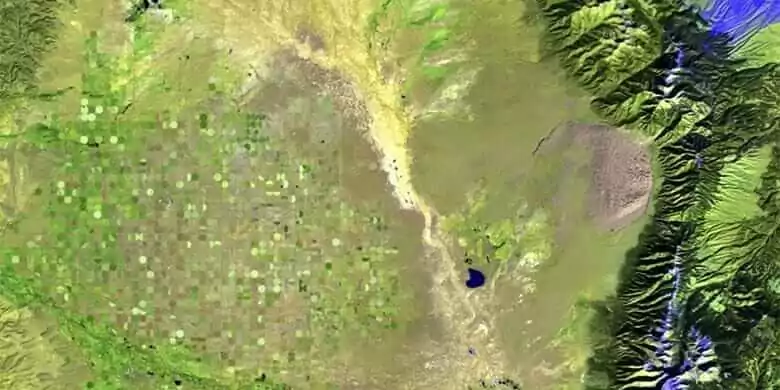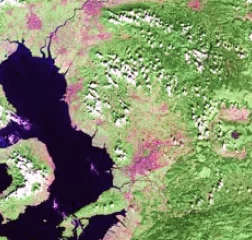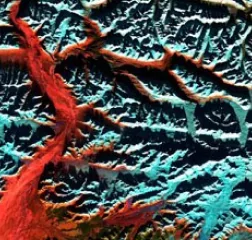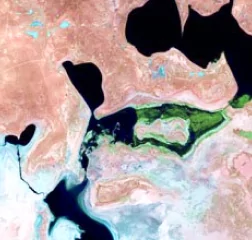Shortwave Infrared Band Combination
The Shortwave Infrared band combination (SWIR2, NIR, Red) is a ubiquitous band combination that is usually used for monitoring drainage and soil patterns, vegetation studies and various stages of crop growth.
In this band combination vegetation appears in shades of red, soils vary from dark to light brown and urban areas are cyan blue. Snow, ice, and clouds are light cyan or white. Hardwood appears lighter red than coniferous trees. In general, the deep red hues show broadleaf and healthier vegetation while the lighter reds indicate sparsely vegetated or grasslands areas. Densely populated areas (urban) appear in light blue. This combination gives results alike to that of a traditional color infrared aerial photography.
It can also be useful for distinguishing newly burned land where it reflects strongly in the bands. This makes them essential for mapping fire damage. Lava flows, Active fires, and other hot features “glow” in the band combination. It also helps in identifying rock type, this is because they reflect bands light differently, making it possible for mapping out the geology. Enhancing the subtle differences between the three bands of the shortwave infrared light that is used in the image gives each mineral a distinctive, bright color.
SWIR2, NIR, Red Bands Applications
Each band provides distinctive features in the image from the band combination.
Short-wave infrared 2. This band is mainly helpful for discriminating among different types of rock formations. It can also be used to measures the infrared radiant flux (heat) amount emitted from the surfaces.
Near-infrared band. This band is particularly responsive to the vegetation biomass that is present in the image. It is used for the identification of crop, distinguishing between soil and crops, and for mapping the water bodies’ boundaries.
Red band. This band is one of the essential bands for delineating different kinds of vegetation. It is also very useful for soil type boundaries mapping and geological formation boundaries.



